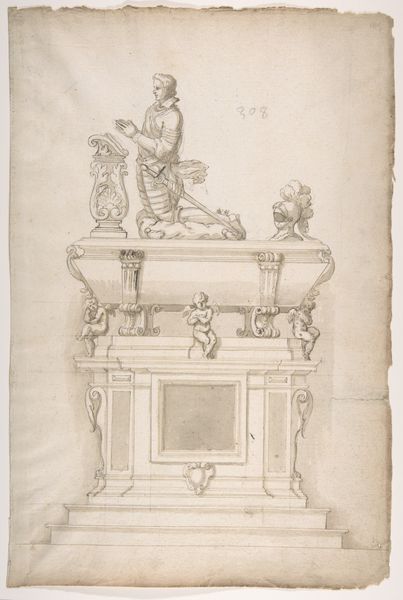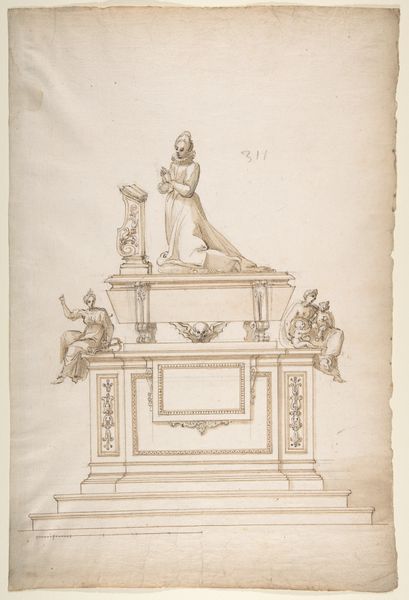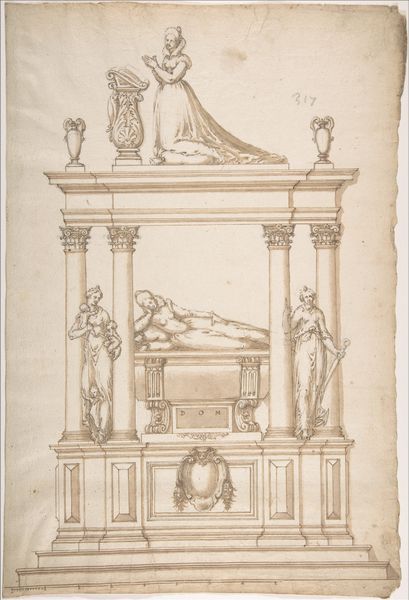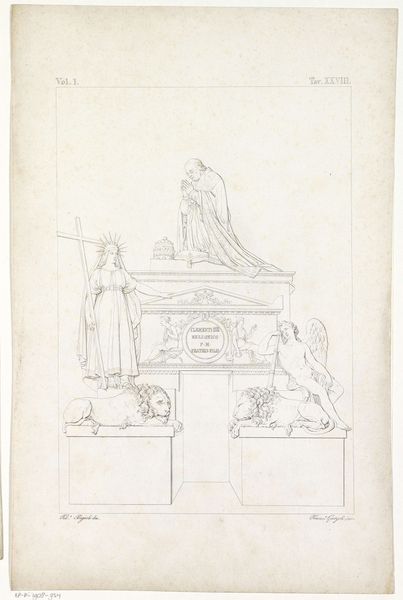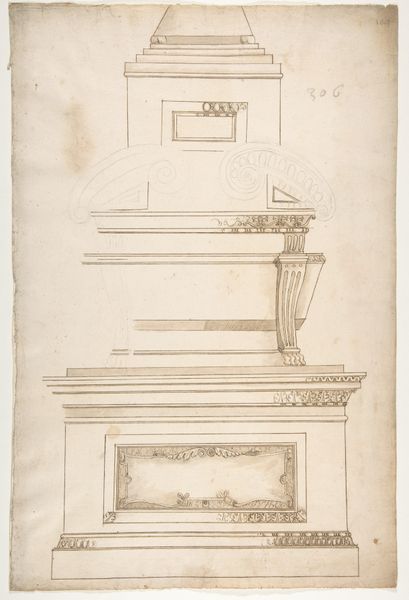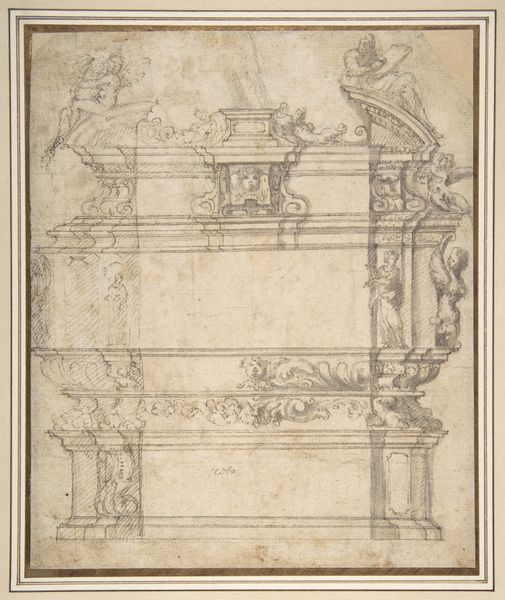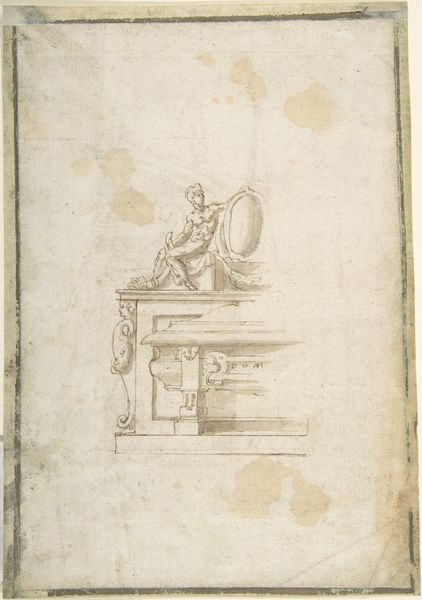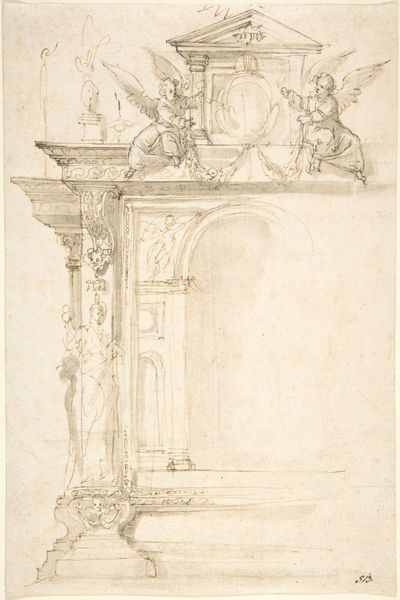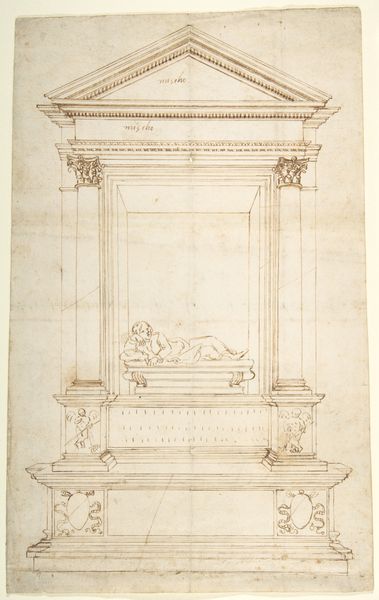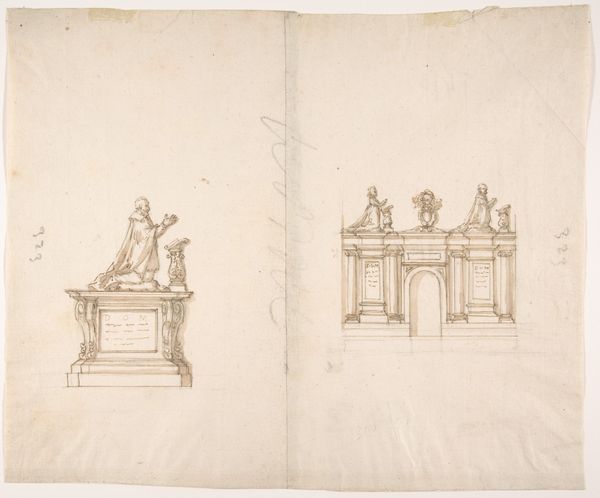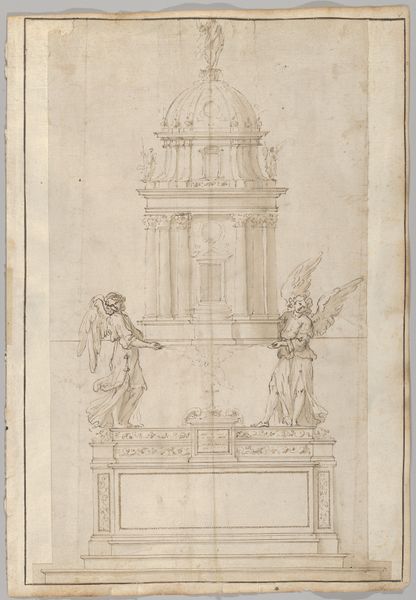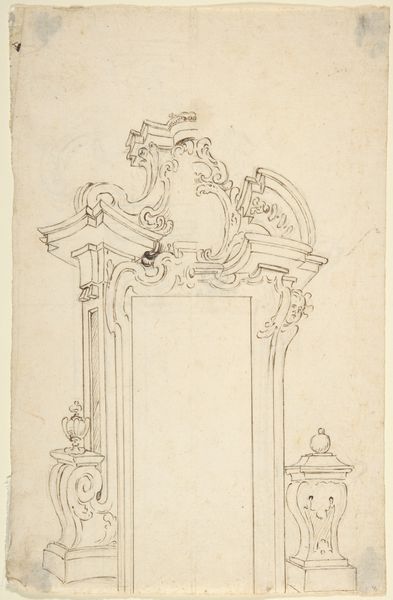
drawing
#
drawing
#
figuration
#
form
#
11_renaissance
#
line
#
history-painting
#
italian-renaissance
Dimensions: sheet: 17 1/16 x 11 7/16 in. (43.4 x 29 cm)
Copyright: Public Domain
Editor: This drawing, "Design for a Lady's Tomb," from the 16th century and held at the Metropolitan Museum of Art, feels so incredibly…staged. It’s an anonymous work, using just lines to depict the tomb and a praying figure. What do you see in this piece? Curator: Well, immediately, the "lady" evokes questions of gender, class, and power during the Renaissance. Was the tomb designed to immortalize a woman known for piety? Or wealth? I wonder, too, about the very public nature of such a monument. How does this portrayal contribute to the construction – or perhaps the challenge – of feminine ideals in the 16th century? Notice how the lines that represent her figure versus the tomb offer distinct ideas around status, permanence, but also access and display. What message do you think this artist hoped to convey about women through their design? Editor: So, you're saying the design of the tomb is also saying something about the person it’s supposed to commemorate? Curator: Absolutely! Think about the politics of representation at the time. This image, regardless of its intended function, enters into a dialogue about how women were perceived, valued, and remembered. The very act of commissioning such a detailed design suggests agency, doesn't it? It’s an act of self-definition. Do you get a sense of whose narrative takes precedent in this tomb design: hers or the family that requested the monument? Editor: I hadn’t considered that. The fact that it’s a design, not a finished piece, adds another layer, I think. It represents someone’s aspirations or ideas. Curator: Precisely. It’s an opportunity to reflect on how social structures influenced artistic expression, and vice-versa. To what extent could the ‘lady’ affect her portrayal, if at all? These drawings provide unique evidence of class, wealth and gender roles at the time. Editor: I never thought about approaching it from that angle before. Now I feel like I'm seeing this artwork in a whole new, much richer context! Curator: Exactly! It encourages us to see how artworks aren't just beautiful objects, but also important documents of social history.
Comments
No comments
Be the first to comment and join the conversation on the ultimate creative platform.
